|
|
The Dukes of Grafton: The Dukes
 |
|
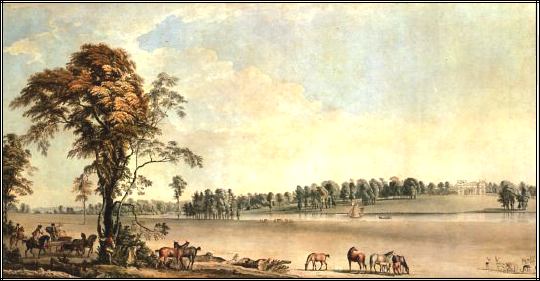 | | |
WAKEFIELD LODGE in Northamptonshire, 117 acres of gardens, pleasure grounds and enclosed meadowland plus a share in pasturage offered by Wakefield Lawn was granted to the second Duke of Grafton as part of his appointment to Lord Warden and Chief Ranger of Whittlebury and Salcey forests by Queen Anne. In 1751 the original structure, used by Oliver Cromwell as a hunting box, was replaced by the William Kent designed structure seen in the distance, commissioned by the 2nd Duke. Kent was a leading and popular practitioner of the "landscape garden;" the landscape designer Capability Brown is also said to have had a hand in developing the park. The Grafton Hunt was founded here by the 2nd Duke, who also sponsored the Wakefield Lawn Races which were held here until 1868. The 3rd and 4th Dukes continued the Grafton Hunt from Wakefield. The 4th Duke also stabled "a splendid supply of first-class sires" at Wakefield to improve the breed of hunters in Grafton country. The property was sold in the 1920s. This watercolor was painted by Paul Sandby in 1767.
|
The Dukes
This Fitzroy family sprang from Barbara Villiers (1641-1709), Lady Castlemaine and later Duchess of Cleveland (patent issued 1670), one of King Charles II's mistresses, by whom she had five or six children. Although initially and uncharacteristically reluctant to acknowledge Lady Castlemaine's second son, born in 1663, due to her suspected involvement with Sir Charles Berkeley (her husband, Roger Palmer, the reluctant Earl of Castlemaine was apparently not considered a probable sire of the boy), Charles eventually did recognize this child as his; at least fourteen illegitimate children from various mistresses have been traced to the charming and dissolute monarch. For this second son, named Henry Fitzroy, Charles arranged a preliminary marriage in 1672, when the boy was nine, to a five year old heiress, Isabella, the daughter of the eminent statesman Henry Benet, Earl of Arlington, who owned Euston Park in Suffolk.
To commemorate the wedding and ensure this son's future, Charles created Henry Baron Sudbury, Viscount Ipswich and Earl of Euston, and in 1675 made the boy Duke of Grafton. Both the headstrong, and by then out-of-favor, Duchess and her future in-laws were against the union, but Charles persisted in seeing the marriage through, and in 1679 witnessed the confirmatory marriage between the sixteen year old Henry and his twelve year old Arlington heiress. As with other natural children of the King, the young Duke was set up with Crown estates and hereditary revenues from customs and excise duties. Due to conditions Charles laid on the grants to his various sons, including the passage of pensions to existing sons or male heirs, should any of the family lines terminate without male issue, by the time Charles' great-great-grandson, Augustus Henry, the 3rd Duke of Grafton, reached middle age, his annual income due to these pensions had swollen to £9,000 a year, and other sinecures brought his total yearly income to £18,000, a true fortune in 1774.
|
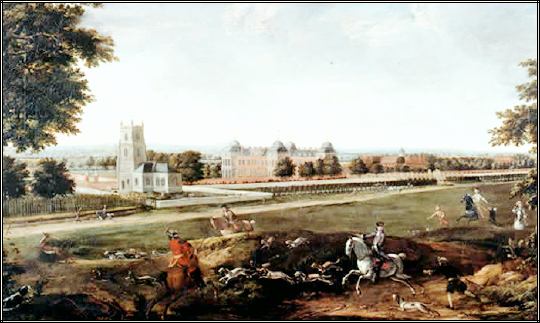 | | |
EUSTON HALL, c. 1710 with a stag hunt in progress (byThomas Wyck), a red brick pile, was built in the 1660s for Lord Arlington and reflected the passion for the French chateau style. It came to the Dukes of Grafton via the first Duke's wife, the Earl of Arlington's daughter; the Earl had purchased the property and added various amenities. He relied on the advice of the indefatigable and intellectually restless John Evelyn (among other things, author of the Compleat Gardener, Aceteria,and Sylva) to improve the park with artistic plantations, and on Sir Samuel Morland to create an engine that raised water in a canal diverted from the Black Bourn to operate fountains and run a corn mill. Eventually the 2nd Duke of Grafton hired William Kent to design a classical banqueting house on the property and to do additional landscape planning; Capability Brown, who later served as gardener to the Duke, added some landscape features, most notably the lakes. Located in Suffolk, a convenient 18 miles from Newmarket, this property was home to the famous Euston Stud.
|
|
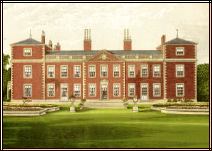
|
Euston was remodeled in the Georgian Style in 1750 by Matthew Brettingham, who moved an entire village from the site because it "blocked the view." This view is from 1860, complete with Georgian-style quoining.
|

|
 | | 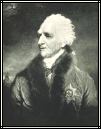 |
Left: the young sporting Third Duke preferred his horses and hounds to life in the public spotlight. Right: the retired statesman.
|
|
|
Augustus Henry Fitzroy, 1735-1811 3rd Duke
Grandson to the 2nd Duke of Grafton, who served as Lord Chamberlain under both George I and George II, the 3rd Duke was six years old when his father, the Duke's third son, Fitzroy Augustus died prematurely. His uncle, George, the Earl of Euston and heir to the ducal title, and an acknowledged scapegrace, also died young, at the age of 32, leaving Augustus Henry heir to the title and fortune. His mother, desirous of marrying again and lacking the means to raise him and his brother, future Baron Southampton, in the necessary style, turned both boys over to their grandfather.
After the requisite education, including tutoring by Horace Walpole at Cambridge, the future 3rd Duke embarked on the obligatory--for his age and class--Continental tour, married Anne Liddell, daughter of a prominent Durham landowner, and was elected M.P. for Bury St. Edmunds. At age 22 he acceded to the title and fortune of his grandfather, and soon thereafter gave up his court appointment as Lord of the Bedchamber to the Prince of Wales, finding any public duties at all unappealing.
Although his young wife was highly thought of for her looks, intelligence and charm, the 3rd Duke preferred to spend his time on the hunting field and at Newmarket Heath, a relatively short distance from his Euston estate. The neglected Duchess adopted some of the less appealing habits of his more frivolous acquaintances, and gradually became addicted to card games of all sorts, during which large sums of money were lost, something that did not appeal to the Duke, and their relationship began to fray.
Sometime around 1763 the Duke met Nancy Parsons, a courtesan of beauty and wit, who became his mistress for four years, and that relationship, which the Duke was considered to have flaunted in society, was one of points upon which he was skewered in public letters by Junius. The Duchess removed herself from the Duke's houses, where her usurper reigned at table, taking her daughter, Georgina, with her, but leaving her son and the future 4th Duke, age 9, with his father. Later, while still married to the Duke, the Duchess became pregnant by Thomas Butler, Earl of Ossory, precipitating a divorce from Grafton and almost immediate subsequent marriage to the Earl, which by most accounts was a much happier one.
|
For his part, the Duke, after his first marriage was terminated, also ended his liaison with the lovely Parsons, and married Elizabeth Wrottesley, a young woman related to the Duke of Bedford, an uncertain political ally of Grafton; his new wife was content to focus on family and bore the Duke twelve more children.
When first at parliament as an M.P., Grafton met and developed a lifelong love and admiration for William Pitt, the Great Commoner. Although unsuited temperamentally and intellectually to the political stage, he made sporadic attempts to influence events, but hadn't the political savvy nor the right sort of guile to successfully serve as a leader of men or a political operative behind the scenes. And, there were always the siren calls of his mistress, his hunting hounds at Wakefield Lodge in Northamptonshire, and his horses at Newmarket and Euston. While secretary of state under the ailing and absent Pitt, and for all intents and purposes acting prime minister, he failed to appear at important Cabinet deliberations regarding Ireland, whose own parliament was on hold while awaiting the decision, because a horse of his was running at Newmarket and he had company at his Euston house, entertained by his mistress. Later Walpole was to write, "The D. of G., like an apprentice, thinking the world should be postponed to a whore and a horse-race."*
After succeeding to the House of Lords, and being drawn into Pitt's inner circle, Grafton found himself out of his depth, first as secretary of state (1765-66), then as first lord of the treasury in Pitt's (now Lord Chatham) administration (1766-68). When Chatham was struck with illness, he prevailed upon Grafton to assume the role of prime minister (1768-1770), a post King George was happy to see fall to such a malleable person.
His premiership was a disaster, coming at a critical juncture in the relationship between England and her American colonies, and guidance from the ill and absent Chatham was lacking. Grafton was responsible for appointing to the Cabinet the three men most responsible for alienating the Americans, Lord North, Lord Hillsborough, and Charles Townsend. He also presided over the refusal to seat the duly-elected Middlesex M.P., the demagogic John Wilkes, who had been expelled from Parliament four years earlier on the grounds of seditious libel and obscenity, primarily for his outspoken attacks on George III. The Wilkes affair became a cause celebre, viewed as an illegal manipulation by royalty of parliamentary privilege and a restraint on the people's right to elect their representatives. As first minister and leader of the King's party, the unhappy Grafton was in the center of the storm. His every private and public fault and failing were viciously held up to public ridicule in a series of anonymous public letters from Junius that appeared in the Public Advertiser from 1769 to 1771, full of personal inventive and shrewdly expressed political arguments. These letters have served to elevate Grafton's notoriety over the years, beyond his actual influence, and have ensured him a place in history for motives of actions that were largely inept, rather than malicious. Grafton resigned as prime minister in 1770, at age 34, unable to reconcile the competing factions within his cabinet. He was replaced as premier by Lord North, but was brought back into service of the country as lord privy seal under North (1771-75), and again under lords Rockingham (1782) and Shelburne (1782-83), although, at his request, not as a member of Cabinet.
In later years the Duke took up theology, and seceded from the Church of England to convert to Unitarianism, a religion not then tolerated by the state, embarrassing his friends and family. He published two books on religion and later had the Griesbach's Greek Testament reprinted at his own expense, to pass out to his friends. He also developed a deeper interest in agriculture, and spent some portion of his time visiting various livestock shows and fairs. He died at the age of 76 in 1811.
|
|
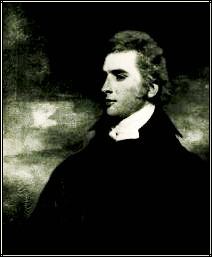 |
Above, the 4th Duke: witty, cool and admired for his sportsmanship.
|
 |
|
|
George Henry, 4th Duke of Grafton 1760-1844
Although he served as an M.P. for 29 years, the 4th Duke of Grafton was most noted as a sportsman. Universally liked, and widely admired by the sporting writers of his day, he generally managed to avoid controversy and political intrigue, living, no doubt, the life his father would have wished for himself. He defied his father in marrying by licence, in 1784, Charlotte Maria Waldegrave, Horace Walpole's niece and granddaughter of Sir Edward Walpole by his mistress, Dorothy Clements. Being a charming and attractive young woman, she eventually won over her father-in-law, who had objected to importing more strains of bastardy into the family line.
The 4th Duke, then Lord Euston, was friends with Pitt the Younger, having been fellow undergraduates at Cambridge. The two stood together to defeat Lord John Townshend and the future Chief Justice Mansfield in the elections of 1784 (for Cambridge). He acceded to the title upon the death of his father in 1811, at the age of 51. He was noted for his dry wit and sense of humor. After the conclusion of a meeting of Opposition peers in 1812, a colleague turned to him to ask, "What is to be done next?" "Wake the Duke of Norfolk who is snoring away near us," the Duke responded. His political interests were less conservative than his father's, and as M.P. he generally, but not always, supported policies propounded by his friend Pitt.
The Duke was famous for dressing whimsically, with a tall hat, brightly-colored frock coat and tightly strapped trousers, and always carrying a tightly-rolled umbrella under his arm at public gatherings. His son, Henry, born in 1790, acceded to the Dukedom upon his death in 1844.
*Walpole to Conway, 16 Je 1768 as cited in Falk, The Royal Fitz Roys, p. 152.
|
|

